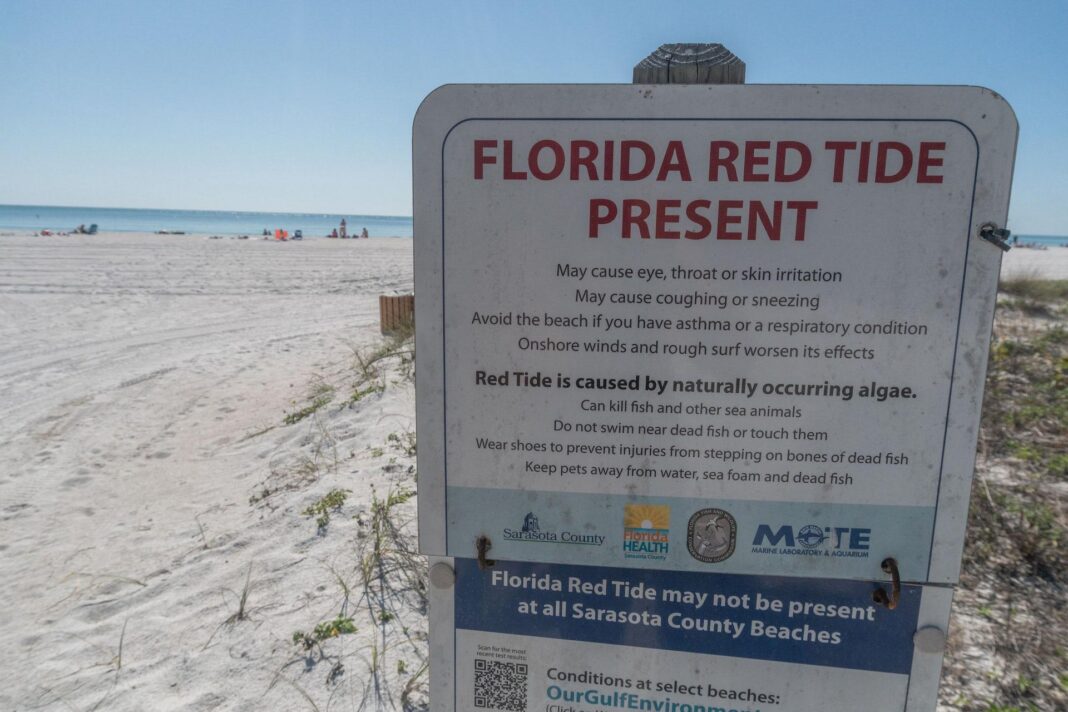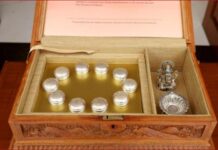Plunging into the ocean or a lake is one of the great joys of summer. But arriving at the beach to find water that’s green, red or brown, and possibly foul-smelling, can instantly spoil the party.
As a toxicologist, I study health risks from both synthetic and natural substances. I’ve conducted research into early detection of harmful algal blooms, or HABs, which are an increasing threat to humans, animals and the environment.
Toxins produced during these blooms have been implicated in human and animal illnesses in at least 43 states. Scientists have estimated that in the U.S. alone, freshwater HABs cause more than US$4.6 billion in damage yearly. Here’s what to know about them if you’re bound for the water’s edge this summer.
Algae and cyanobacteria – often called blue-green algae – are simple, plantlike organisms that live in water. They can grow out of control, or “bloom,” especially when the water is warm and slow moving. Climate change is making water bodies warmer, increasing the risk of HABs.
The other major factor that drives blooms is high levels of nutrients like nitrogen and phosphorus, which fertilize algae. Nutrient pollution comes mainly from agriculture, wastewater treatment plants, septic systems and fossil fuel combustion.
Sometimes these blooms contain organisms that produce toxins – an umbrella term for many poisonous substances that come from animals or plants and can make people and animals sick and adversely affect the environment. These events are called harmful algal blooms.
HABs occur throughout the U.S. and worldwide, in both saltwater and freshwater environments. They pose significant health risks to human, pets, livestock and wildlife; damage ecosystems; increase water treatment costs; restrict recreational activities; and cut into economic revenues.
People and animals can be exposed to HAB toxins through many routes. These include skin contact during activities such as swimming or boating; inhaling airborne droplets that contain toxins; swallowing contaminated water; or eating food or supplements that contain toxins. The most severe effects generally result from consuming contaminated seafood.
There are numerous HAB toxins, including substances such as microcystin, saxitoxin, cylindrospermopsin, anatoxin-A and domoic acid. Each has a different action on the body, so HABs can have diverse harmful effects.
Typical symptoms of illness from exposure to HAB toxins can include stomach pain, vomiting or diarrhea; headache, fever, tiredness or other general symptoms; skin, eye, nose or throat irritation; and neurological symptoms such as muscle weakness or dizziness. Depending on the toxin, higher levels of exposure can result in tremors or seizures, respiratory distress, kidney toxicity, liver toxicity and even death.
As with many environmental exposures, children and older people may be especially sensitive to HAB toxins. People who regularly consume seafood caught in HAB-prone areas are also at risk of long-term health effects from potentially frequent, low-level exposures to HAB toxins.
It’s not possible to tell whether a bloom is harmful just by looking at it, but there are some warning signs. If the water appears green, red, brown or yellowish in color; has a strong musty or fishy odor; has foam, scum, algal mats or paintlike streaks on the surface; or if there are dead fish or other marine life in the water or washed up on the shoreline, it’s likely that a HAB may be occurring.
If you are unsure whether a bloom is harmful or not, contact your local health department or environmental agency for guidance. As a general rule, it’s good to check with local agencies to see whether there are any relevant warnings when you go to the beach.
If you are notified of a bloom in a nearby body of water or in your public drinking water supply, the most important thing you can do to reduce your chances of getting sick is to follow local or state guidance. If you see signs of a bloom, stay out of the water and keep your pets out of the water.
It’s also important to follow local guidelines about consuming seafood caught through recreational fishing. It’s important to be aware that cooking contaminated seafood or boiling contaminated water does not destroy the toxins.
The U.S. Centers for Disease Control and Prevention provides resources and recommendations related to HABs and ways to stay safe. Pet owners should also learn how to protect their dogs from HABs.
Other federal agencies that offer information about HABs include the U.S. National Office for Harmful Algal Blooms and the National Institute of Environmental Health Sciences.
Many states conduct HAB monitoring programs, especially in areas that are known to be vulnerable to blooms, such as western Lake Erie. The U.S. Environmental Protection Agency offers HAB resources by state. Apps used by water quality managers and state officials who make management decisions about public water supply safety, including CyAN Android and CyANWeb, may contain useful information about HABs in your area.
Many efforts are underway to prevent, control and mitigate HABs and provide early warnings to water system managers and health officials.
One example in the U.S. is the Cyanobacteria Assessment Network, or CyAN, a collaborative effort across several government agencies to develop an early warning indicator system to detect algal blooms in freshwater systems. There are also several ongoing projects for HAB forecasting by region.
At the global scale, the Harmful Algal Information System will eventually include harmful algal events and information from harmful algae monitoring and management systems worldwide.
Citizen scientists can provide invaluable help by monitoring local waters. If you would like to participate, consider joining the Phytoplankton Monitoring Network or the Cyanobacteria Monitoring Collaborative, and download and use the Cyanobacterial bloom app to report potential HABs in bodies of water you visit.
This article is republished from The Conversation, an independent nonprofit news site dedicated to sharing ideas from academic experts. Like this article? Subscribe to our weekly newsletter.
Read more: Swimming gives your brain a boost – but scientists don’t know yet why it’s better than other aerobic activities The Great Atlantic Sargassum Belt is carrying a massive bloom of brown seaweed toward Florida and the Caribbean
Brad Reisfeld received funding from the US Environmental Protection Agency to work on a project related to HABs detection














